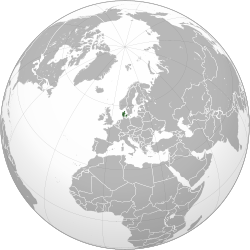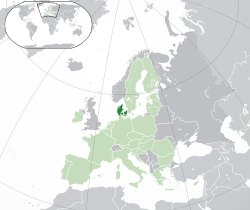**Historical Development**:
– Denmark’s history dates back to the Eem interglacial period, with archaeological finds from 130,000-110,000 BC.
– The country has been inhabited since around 12,500 BC, with evidence of agriculture dating back to 3900 BC.
– The Nordic Bronze Age was marked by burial mounds, and Denmark saw Roman influence during the Pre-Roman Iron Age.
– Tribal Danes migrated to Denmark during the Roman Iron Age, contributing to the country’s cultural evolution.
– The Viking and Middle Ages witnessed the construction of the Danevirke defense structures, the emergence of Danish kings, and the introduction of a new runic alphabet.
– Notable events include the founding of Ribe, the oldest town in Denmark, and the Christianization of the Danes by Harald Bluetooth around 965 AD.
**Political Evolution and Governance**:
– Denmark transitioned to a constitutional monarchy in 1849, with a two-chamber parliament established through a new constitution.
– The country’s political landscape has seen shifts, including the introduction of a single-chamber parliament in 1953 and the accession of females to the Danish throne.
– Greenland became an integral part of Denmark, and various political parties have led coalition governments over the years.
– The government operates under a constitutional monarchy, with the monarch’s role being ceremonial and executive power vested in the government.
– The Danish parliament, Folketing, is unicameral and operates as a representative democracy with universal suffrage.
**Geography and Territorial Features**:
– Denmark is located in Northern Europe and consists of the northern part of the Jutland peninsula and an archipelago of 406 islands.
– The country’s largest island is Zealand, where the capital Copenhagen is situated, and various bridges connect the larger islands.
– Denmark’s total area is 42,943.9 square kilometers (16,581 sq mi), with no location farther than 52km (32mi) from the coast.
– The highest natural point is Møllehøj at 170.86 meters (560.56 ft), and Denmark’s coastline is characterized by sandy beaches and large dunes.
– Territorial waters total 105,000 square kilometers (40,541 sq mi), and the country’s average elevation above sea level is 31 meters (102 ft).
**Environmental and Climate Factors**:
– Denmark experiences a temperate climate with cool to cold winters and mild summers, with large seasonal variations in daylight due to its northern location.
– The country averages 179 days of precipitation per year, receiving 765mm annually, and has recorded temperatures ranging from 36.4°C to -31.2°C.
– Denmark’s ecology includes beech forests belonging to the Boreal Kingdom, with wildlife like roe deer, red deer, and various bird species.
– The country faces environmental challenges such as land and water pollution, but efforts in waste filtration and recycling are increasing.
– Denmark has taken progressive steps in environmental preservation since the 1970s, with notable achievements in climate protection policies.
**European Integration and Modern Developments**:
– Denmark joined the European Union in 1973 and signed the Lisbon Treaty in 2007, playing an active role in European integration.
– The country is a founding member of the European Free Trade Association (EFTA) and has opted out of adopting the euro as its national currency.
– Denmark’s modern era is characterized by its high standard of living and welfare state model, with industrialization starting in the 19th century.
– The nation remained neutral in World War I but was occupied by Germany in World War II, highlighting its strategic position in European conflicts.
– Denmark’s government and politics operate under the Constitution of Denmark, with a focus on maintaining stability, democratic principles, and social welfare.
Denmark (Danish: Danmark, pronounced [ˈtænmɑk] ⓘ) is a Nordic country in the south-central portion of Northern Europe. It is the metropolitan part of and the most populous constituent of the Kingdom of Denmark, a constitutionally unitary state that includes the autonomous territories of the Faroe Islands and Greenland in the North Atlantic Ocean. Metropolitan Denmark is the southernmost of the Scandinavian countries, lying south-west and south of Sweden, south of Norway, and north of Germany, with which it shares a short border, Denmark's only land border.
Denmark Danmark (Danish) | |
|---|---|
| Anthem: Der er et yndigt land (Danish) (English: "There is a lovely country") | |
| National and royal anthem: Kong Christian stod ved højen mast (Danish) (English: "King Christian stood by the lofty mast") | |
Location of metropolitan Denmark (dark green)
Location of the European Union (light green) | |
| Sovereign state | Kingdom of Denmark |
| Consolidation | c. 8th century |
| Christianization | c. 965 |
| Constitutional Act | 5 June 1849 |
| Faroese home rule | 24 March 1948 |
| EEC accession | 1 January 1973 |
| Greenlandic home rule | 1 May 1979 |
| Capital and largest city | Copenhagen 55°43′N 12°34′E / 55.717°N 12.567°E |
| Official languages | Danish |
| German | |
| Ethnic groups (2020) | |
| Religion (2020) |
|
| Demonym(s) | |
| Government | Unitary parliamentary constitutional monarchy |
• Monarch | Frederik X |
| Mette Frederiksen | |
| Legislature | Folketing |
| Area | |
• Total | 43,094 km2 (16,639 sq mi) (130th) |
• Water (%) | 1.74 |
| Highest elevation (Møllehøj) | 170.86 m (560.56 ft) |
| Population | |
• February 2023 estimate | |
• Density | 138.22/km2 (358.0/sq mi) |
| GDP (PPP) | 2023 estimate |
• Total | |
• Per capita | |
| GDP (nominal) | 2023 estimate |
• Total | |
• Per capita | |
| Gini (2022) | low |
| HDI (2022) | very high · 5th |
| Currency | Danish krone |
| Time zone | UTC+01:00 (CET) |
• Summer (DST) | UTC+02:00 (CEST) |
| Calling code | +45 |
| Internet TLD | .dk |
| Website | denmark |
As of 2013, the Kingdom of Denmark, including the Faroe Islands and Greenland, had a total of 1,419 islands greater than 100 square metres (1,100 sq ft) in area; 443 of these have been named and 78 are inhabited. Spanning a total area of 42,943 km2 (16,580 sq mi), metropolitan Denmark consists of the northern part of the Jutland peninsula and an archipelago of 406 islands. Of these, the most populated island is Zealand, on which the capital and largest city, Copenhagen, is situated, followed by Funen, the North Jutlandic Island, and Amager. Denmark has flat, arable land, sandy coasts, low elevations, and a temperate climate. It had a population of 5,964,059 (1 December 2023), of whom 800,000 live in Copenhagen (2 million in the wider area). Denmark exercises hegemonic influence in the Danish Realm, devolving powers to handle internal affairs. Home rule was established in the Faroe Islands in 1948 and in Greenland in 1979; the latter obtained further autonomy in 2009.
The unified Kingdom of Denmark emerged in the 8th century AD as a proficient maritime power amid the struggle for control of the Baltic Sea. In 1397, it joined Norway and Sweden to form the Kalmar Union, which persisted until the latter's secession in 1523. The remaining Kingdom of Denmark–Norway endured a series of wars in the 17th century that resulted in further territorial cessions. A surge of nationalist movements in the 19th century were defeated in the First Schleswig War of 1848. The adoption of the Constitution of Denmark on 5 June 1849 ended the absolute monarchy and introduced the current parliamentary system. An industrialised exporter of agricultural produce in the second half of the 19th century, Denmark introduced social and labour-market reforms in the early 20th century, which formed the basis for the present welfare state model and advanced mixed economy. Denmark remained neutral during World War I; Danish neutrality was violated in World War II by a rapid German invasion in April 1940. During occupation, a resistance movement emerged in 1943, while Iceland declared independence in 1944; Denmark was liberated after the end of the war in May 1945. In 1973, Denmark, together with Greenland but not the Faroe Islands, became a member of what is now the European Union, but negotiated certain opt-outs, such as retaining its own currency, the krone.
Denmark is a developed country with a high standard of living. It is a founding member of NATO, the Nordic Council, the OECD, the OSCE, and the United Nations, and is part of the Schengen Area. Denmark maintains close political, cultural, and linguistic ties with its Scandinavian neighbours, with the Danish language being partially mutually intelligible with both Norwegian and Swedish.




